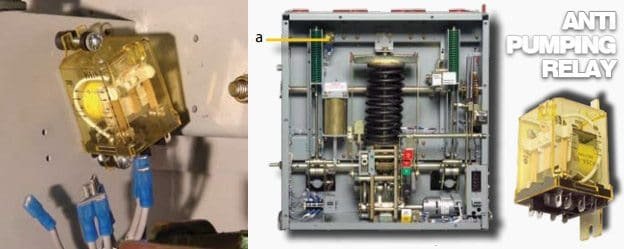Capacitors for power factor improvement are generally connected in delta because it reduces the voltage stress on the capacitors. How are Capacitors Connected for PF Improvement This connection also allows the capacitors to provide higher reactive power compared to a star configuration.
I can tell you there are two main ways to connect capacitors for PF improvement: Star (Wye) connection and Delta connection. Each has its own advantages and disadvantages depending on the specific system characteristics and desired outcome.
Star (Wye) Connection:

- Simple and widely used: This is the most common configuration due to its ease of installation and maintenance. Each capacitor phase is connected to one line and a central neutral point.
- Effective for balanced loads: In balanced three-phase systems, the star connection provides equal reactive power compensation to each phase, improving overall power factor efficiently.
- Higher harmonic currents: Higher order harmonics generated by some loads can circulate within the neutral conductor, causing overheating and potential equipment damage.
- Grounding considerations: If a neutral conductor fault occurs, it can result in overvoltage on healthy phases. Proper grounding and protection are crucial.
Delta Connection:

- Eliminates neutral conductor issues: No neutral point exists, eliminating circulating harmonic currents and simplifying grounding considerations.
- Line-to-line voltage rating: Requires capacitors with higher voltage ratings to withstand line-to-line voltage.
- Less forgiving for unbalanced loads: Unequal current distribution across phases can occur under unbalanced load conditions, potentially leading to lower overall power factor improvement.
- Fault detection: Fault detection can be more complex compared to the star connection.
Choosing the right connection
The optimal connection type depends on various factors, including:
- Load characteristics: Balanced or unbalanced? Harmonic presence?
- Desired power factor improvement: Target power factor and required reactive power compensation.
- System configuration: Availability of neutral conductor, grounding considerations.
- Cost and complexity: Ease of installation and maintenance.
Beyond the basics:
- Switched capacitor banks: Multiple capacitor units can be switched on and off in groups for flexible control of reactive power based on real-time demand.
- Harmonic filters: In systems with significant harmonic distortion, additional filter circuits may be needed alongside capacitors for optimal power factor correction.
Remember, proper sizing and selection of capacitors for your specific system is crucial for effective power factor improvement and ensuring stable operation. Always consult with qualified electrical engineers and follow relevant regulations and industry standards.
Power factor improvement is crucial for efficient energy usage and a delta connection ensures optimal performance of the capacitors in achieving this objective. In industrial and commercial settings, the utilization of capacitors plays a vital role in enhancing power factor correction.
When connected in a delta configuration, capacitors effectively mitigate the amount of reactive power, thereby enhancing overall power factor. Understanding the rationale behind connecting capacitors in delta is essential for optimizing electrical systems and ensuring energy efficiency. Let’s delve deeper into the reasons why delta connection is preferred for capacitors used in power factor improvement.
Reference:
https://www.researchgate.net/figure/Delta-Connection-of-capacitors_fig3_272291852







